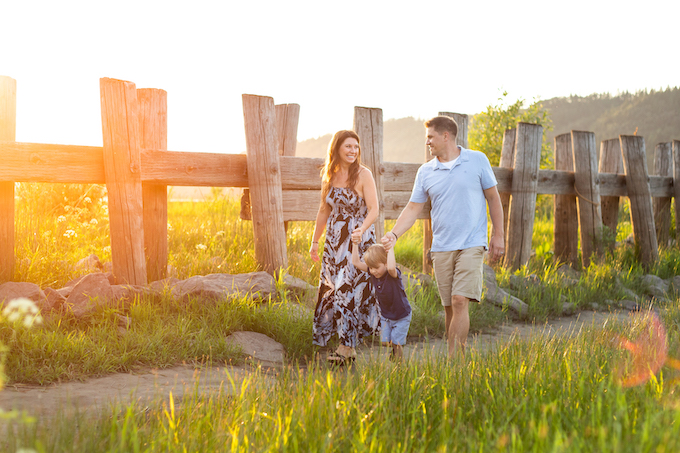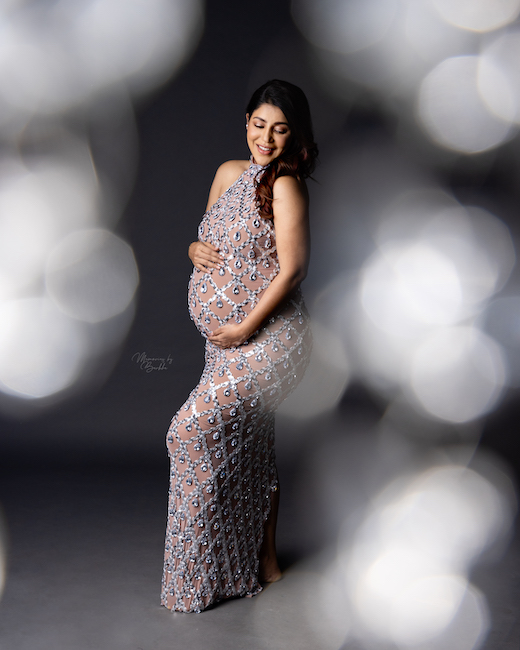 All photos © Justine Ungaro
All photos © Justine Ungaro
Justine Ungaro’s portfolio reveals an esthetic that is classic, elegant and clean—a technically sound and creatively executed approach to photographs of the family. But the Southern California-based photographer says her image making beginnings were a bit more colorful: she once followed trends like diffused glow, then textures and a “grungy” phase, color shifts, and added props and styling. She spent a lot of extra time after the shoot, working to emulate what others were doing a the time in her digital darkroom, as well as striving to fulfill her clients’ requests for the latest in post-processing techniques.
In 2006, a year after a cross-country move from the D.C. area to L.A., Ungaro took a step back to re-evaluate her work and thoughtfully create a brand that screamed her name. “I asked myself, ‘what’s my style?’ I was having a bit of a personality crisis,” she confesses. Not wanting her style to be defined by the latest craze, she started listening more to the descriptive words that clients and photographer friends used to describe her work. And there were certain key terms that stuck: they were drawn to her simple, natural, unenhanced images; they were also struck by the timelessness and nostalgic feeling evoked by her photographs.
So Ungaro stopped following trends of the day, poising herself to be ready when the pendulum swung back toward a more classic approach to photography. Setting strict rules for herself (black-and-white, white-on-white, or natural-color images only), she established a distinct style that defines her work to this day.



And her efforts have paid off; marketing is essentially a non-issue for Ungaro. Her weddings are a “funnel” for the rest of her business, as the couples she wins over with her wedding work start having children, and come back to Ungaro to capture their growing families. In other words, she establishes strong, long-term relationships with her clients, and offers them timeless family portraits—largely because of their simple, monochromatic look.
Black-and-White Persuasion
Black-and-white works so well for capturing families as they grow, and Ungaro sticks to it, unless she sees a particular reason for a certain shot to be in color, such as certain familial features (unique eye or hair color), or locations or landscapes that beg for particular hues to be highlighted. “Black-and-white pulls out the distractions,” she says, adding that families “don’t always pay attention to her wardrobe ideas.” Plus, she can focus more on expression and composition. Furthermore, it’s what her clients are primarily asking for—particularly the celebrities she photographs in L.A.—who want their broods to be captured naturally and untouched.
And when clients come to her with a new “idea” or trendy look, she shares her philosophy of photographic staying power, guiding them away from something that they may regret a few years down the road. An added benefit of following her “rules” is that Ungaro’s families receive images that fit together year after year, creating a seamless gallery over time.
A Stellar Session
Great family portrait sessions don’t happen magically—doing prep work before the shoot is just part of Ungaro’s process. And this begins with a consultation meeting. For in-home sessions, she meets the families in their element, and in the process, scopes out the home for the lighting and potential backdrops. She advises that timing is everything for families with small children, and always finds a time slot in which the children are not in need of a nap.

In these planning sessions, Ungaro also gets ideas for a shot list from the parents and determines which poses are must-haves for the family. Anything beyond these shots she considers bonus material.
The hazards of the job, however, are more “parent-related than child-related,” she says. Parents often want to “coach” their kids, and she says that a quick pep talk prior to the actual session can really help. She encourages parents to “let the child go,” and do whatever it is that he or she is going to do. In a one- to two-hour time frame (the typical length of her family sessions), a lot can happen, and she’s most interested in the non-posed shots, saying it’s “important to be ready for unpredictable moments” when it comes to kids. Sometimes, once everyone is comfortable with Ungaro and her camera, she’ll even ask the parents to leave the area for a while, which often allows the children to relax more. Sometimes a “snack break” helps when a toddler starts getting squirmy; other times, you just know when you’re done (the kids always let you know), and Ungaro knows not to push it.
Coming Equipped
Ungaro’s shooting and lighting arsenal includes her workhorse—a Canon 5D Mark III—Canon speedlights on- and off-location, and Alien Bees in her studio. Her favorite flash is her Quantum, for its portability and that it fits in her camera bag. One challenge when it comes to shooting families in their homes, says Ungaro, is the lack of light. “Usually my main light source in a family’s home is a window. The light may be nice but sometimes there is just not quite enough of it. So a quick and easy solution is to place a flash on a light stand in front of, next to or just outside the window to mimic the direction of the window light and to make it stronger, but without actually fighting against it.”
.jpg)
Although in-home sessions have become popular in recent years, Ungaro is thinking ahead: she recently completed renovations on an 800-square-foot studio space (complete with furniture and décor?) that reflects her clean style of photography. While Southern California homes are generally open and light, they’re not always perfect, and some families (read: moms) love that they don’t have to prep their home for a shoot. Ungaro, in turn, loves the control and simplicity her studio offers. It helps avoid the unpredictability of lighting on a given day, she doesn’t have to move furniture around in her studio, or avoid background “noise,” such as play sets and toys. She says, “The [studio] is kind of a long-term dream finally realized.”

And when the shoot is finished, in lieu of slideshows she once assembled to show clients their images, Ungaro has been using an app called Preveal. It allows her to take a picture of the actual wall in which clients will hang the images they purchase, and then drag the images into various mats and frames to come up with a perfect arrangement of family portraits. She is a master at creating entire “walls” of her work, and it helps steer her clients into ordering more than just the traditional 8 x 10 for themselves and 4 x 6 prints for the grandparents. It’s especially helpful for those long-term clients who want to continue adding images over the years. “It’s great to be able to show them their own wall and what it’s going to look like when we’re done.”
Ungaro uses Simply Color Lab for larger format and framed prints, and the majority of her portrait income comes from the sale of prints and albums (for albums, she uses Queensberry). “The session fee itself does not include any products or images, just my time,” Ungaro explains. “Print prices range from $90 for a 5 x 7 to $2,700 for a 40 x 60.”

In the meantime, clients like Jen Middleton have no complaints. Middleton, whose relationship with Ungaro began seven years ago when she and her husband, Eric, hired the photographer to shoot their wedding, says Unagro’s style is what keeps them coming back. “Staged, posed pictures are not our personality; Justine’s style fits perfectly with how we want to remember the amazing moments we are experiencing raising our children,” Middleton says. “When we look at the family pictures she has done, Eric and I are taken back to the moment they were taken: the way we were holding the baby, or what we were thinking as we looked into each other’s eyes. It’s amazing the emotion her photography evokes in us.”




